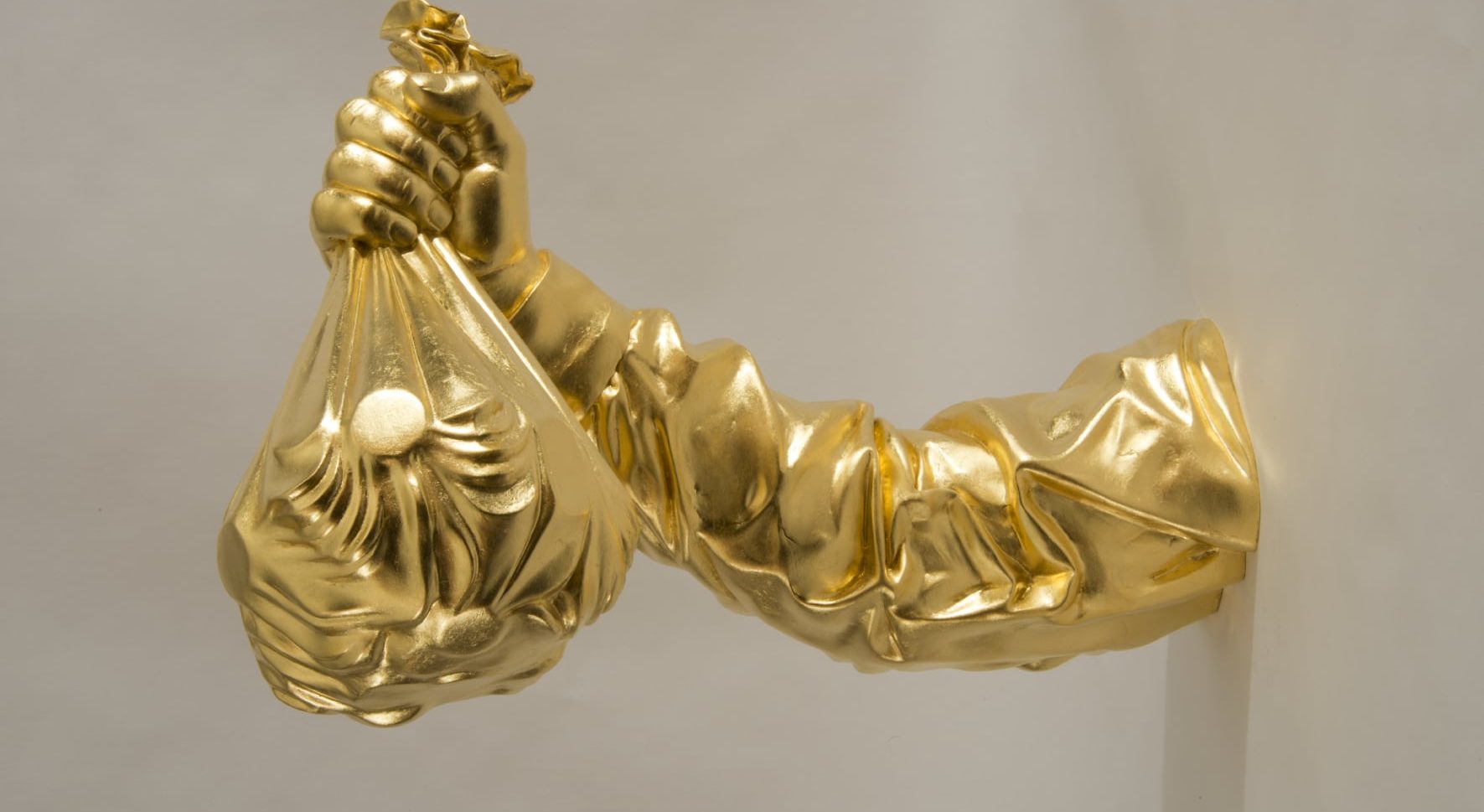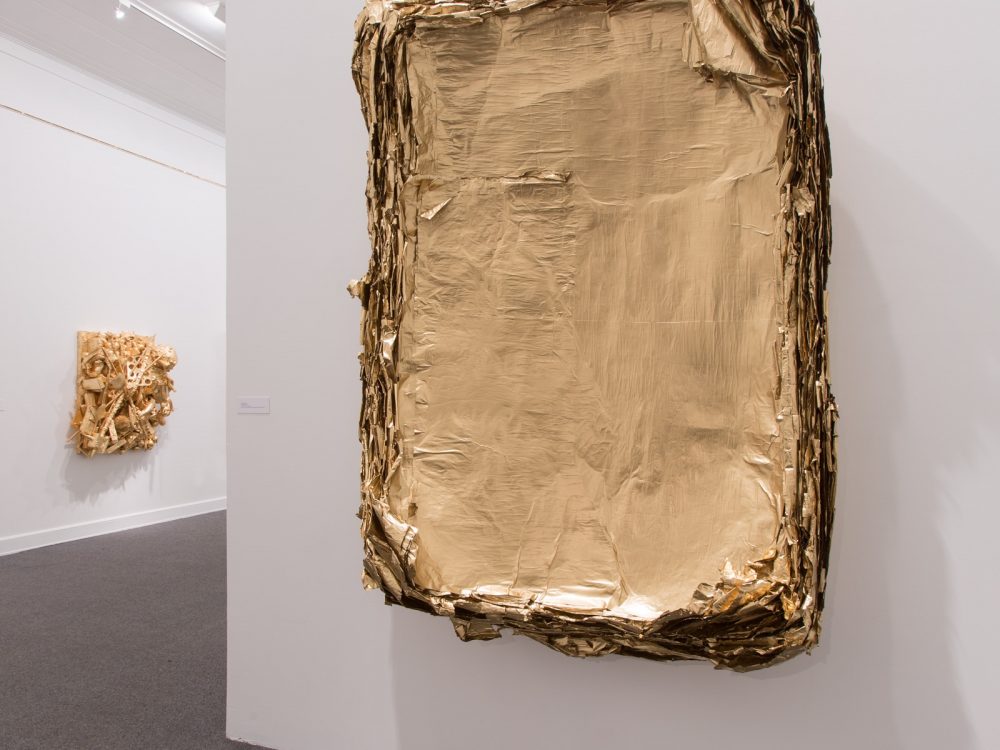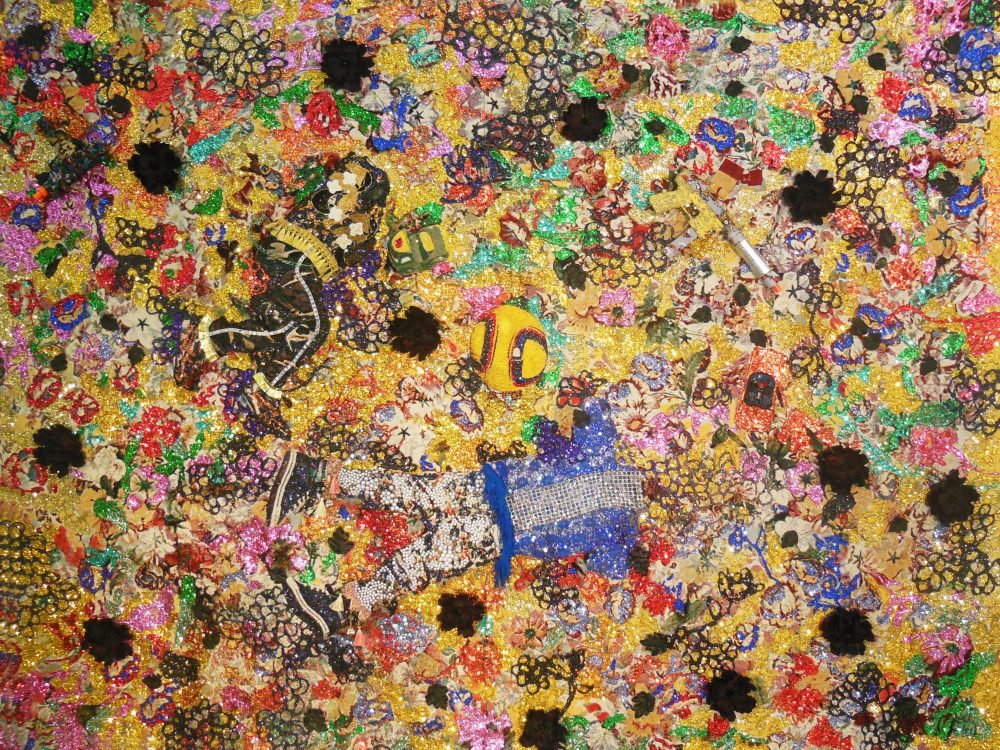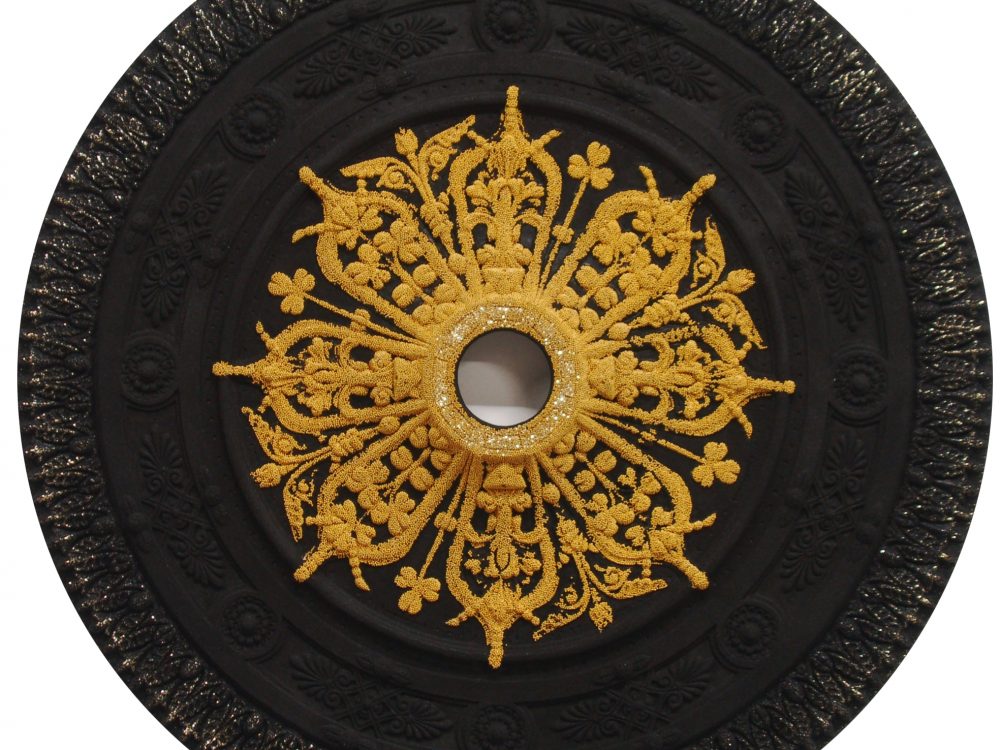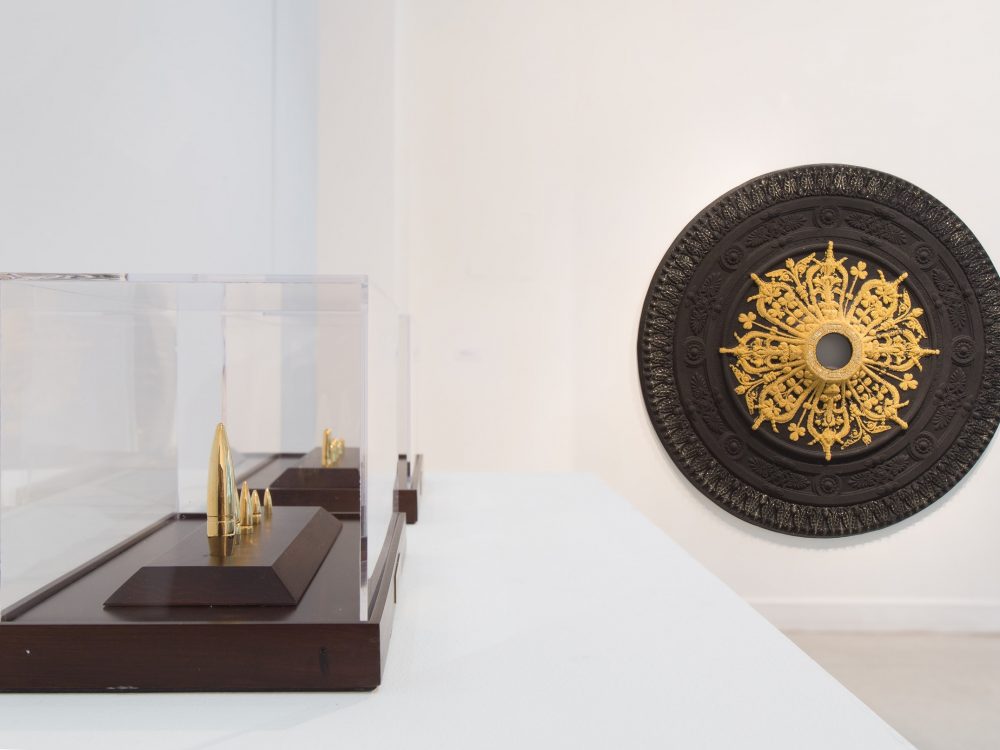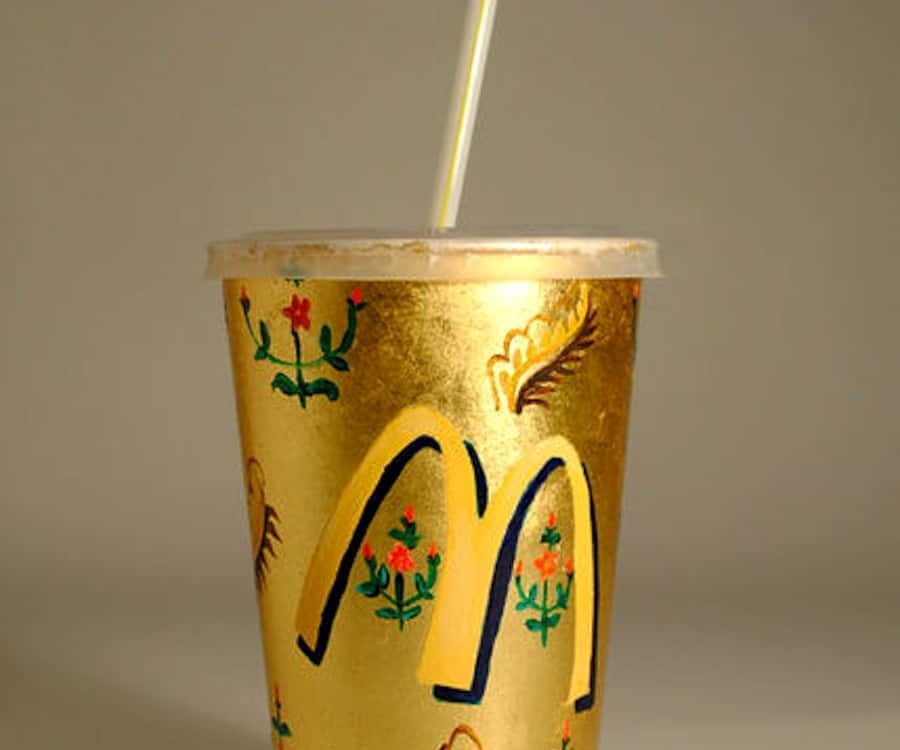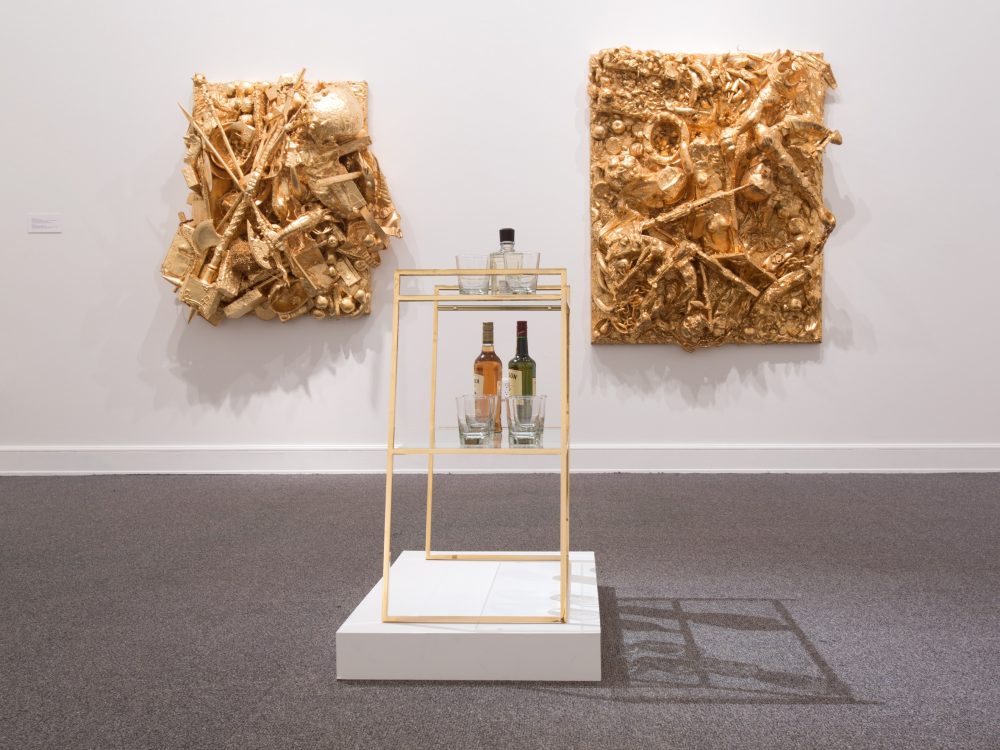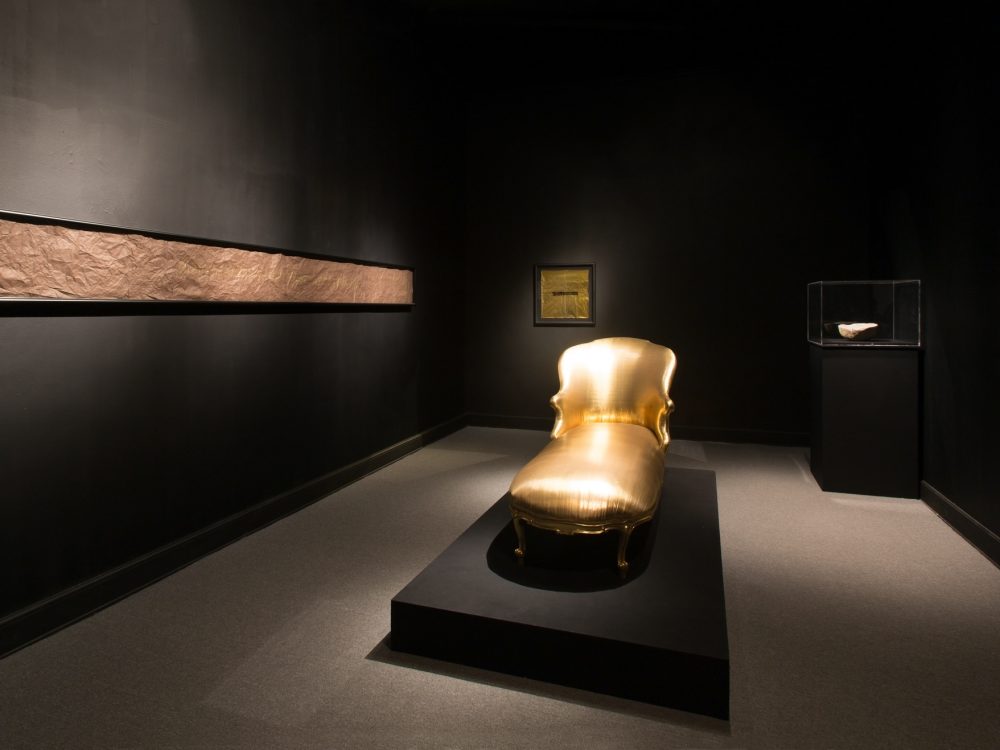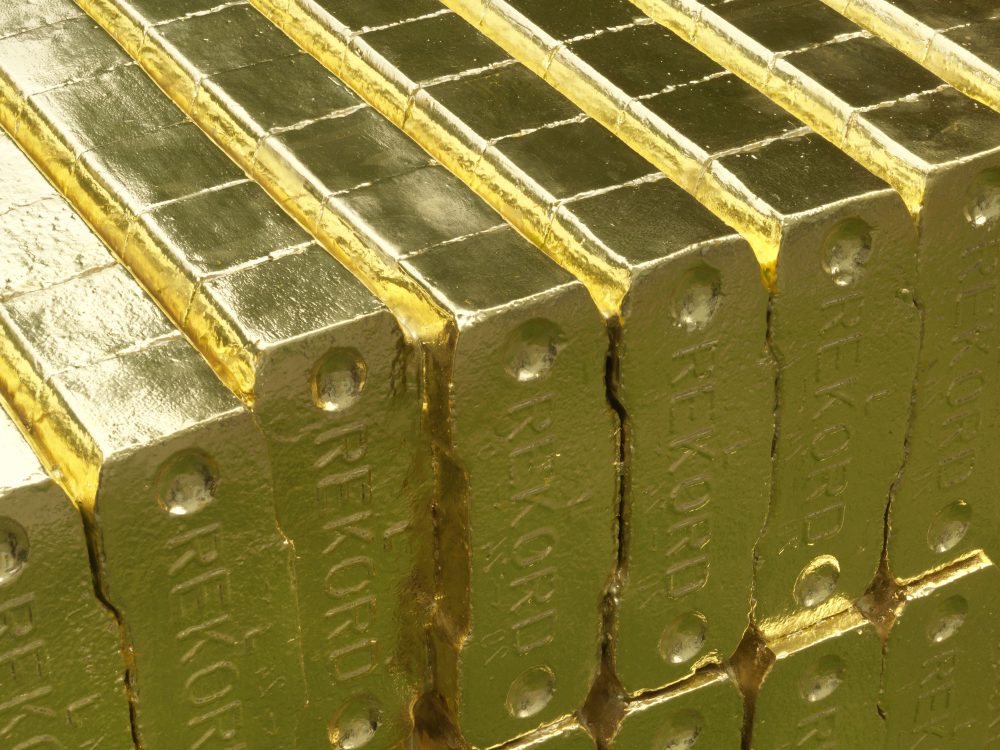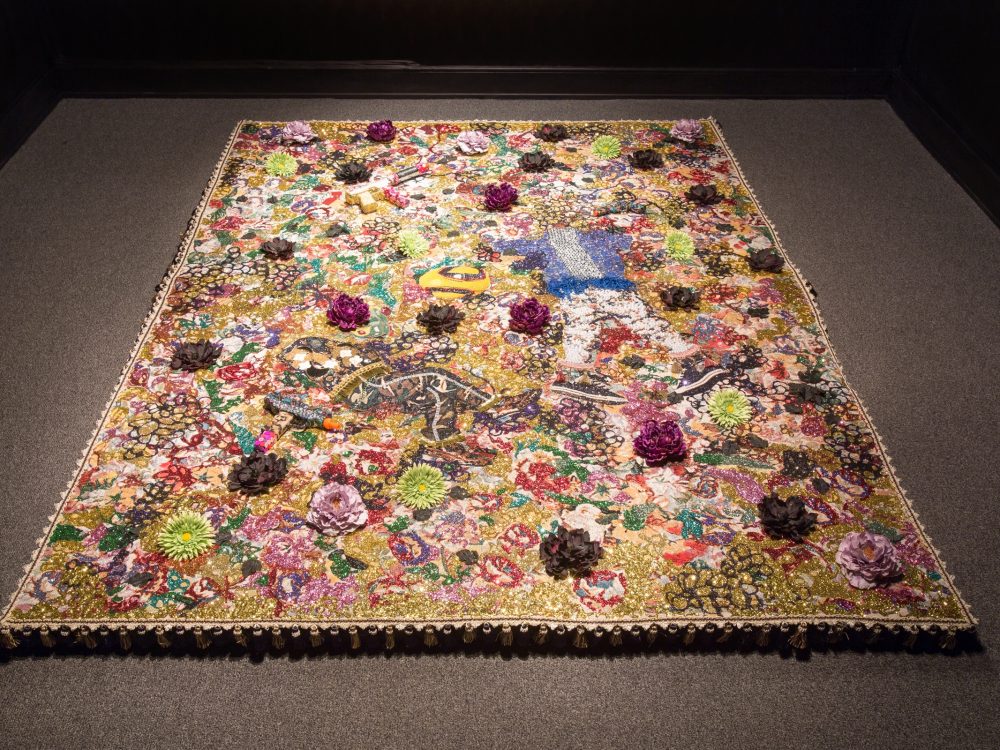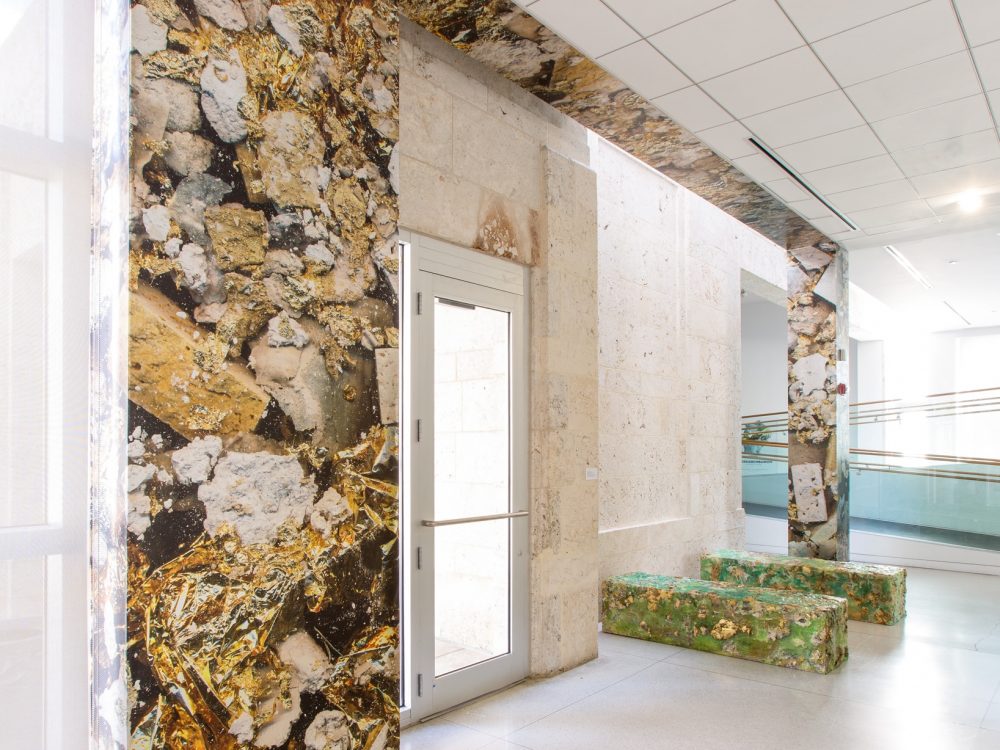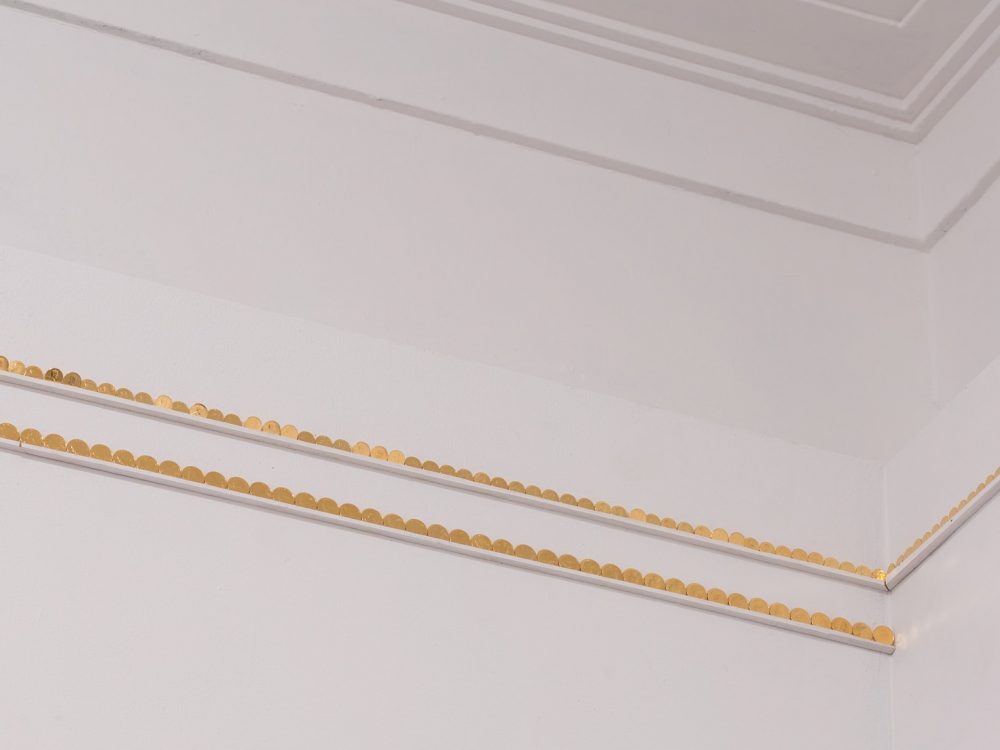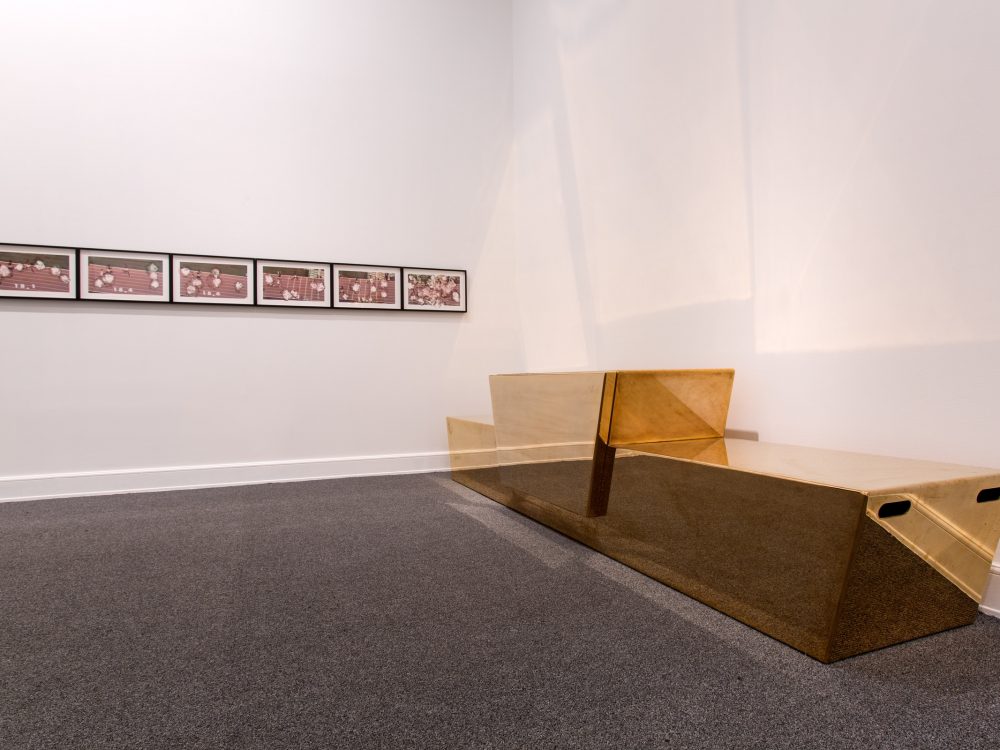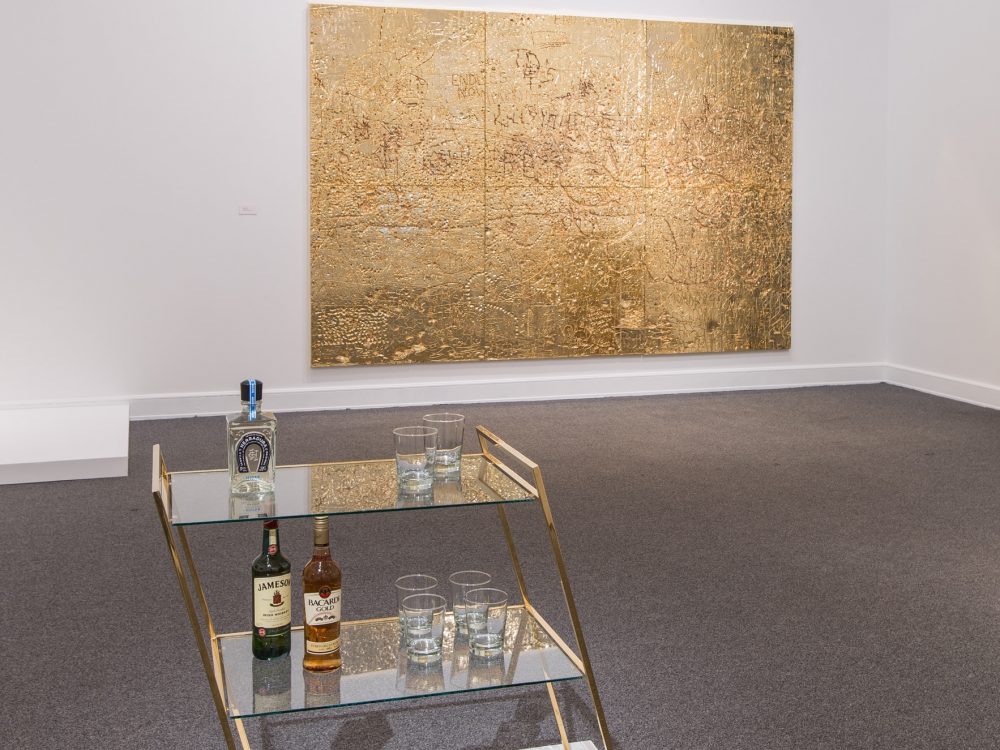GOLD
In celebration of its 50th anniversary, The Bass presents GOLD, featuring artworks by contemporary artists who physically or conceptually utilize gold in their practice. The 24 international artists in GOLD examine the multitude of ideas with which the material is associated, using gold to reinforce or challenge notions of transformation, beauty, spirituality, and values, both economic and moral.
Curated by José Carlos Diaz, GOLD is comprised of 30 works by artists Olga de Amaral, Eric Baudart, Carlos Betancourt, Chris Burden, James Lee Byars, Elmgreen and Dragset, Dario Escobar, Sylvie Fleury, Cyprien Gaillard, Patricia M. Hernandez, Jim Hodges, Glenn Kaino, Alicja Kwade, Sherrie Levine, Kris Martin, Fernando Mastrangelo, Yucef Merhi, John Miller, Martin Oppel, Ebony G. Patterson, Todd Pavlisko, Robin Rhode, Cristina Lei Rodriguez and Rudolf Stingel.
Several artists overturn expectations of gold by using it to transform and elevate everyday objects, such as Sylvie Fleury’s gold-plated trash can, or John Miller’s assemblages of miscellaneous junk enriched through the use of gold leaf. Eric Baudart’s Concave features peeling street posters that have been spray-painted, obliterating the man-made content they originally conveyed.
By contrast, Chris Burden’s Gold Bullets juxtaposes gold’s visual beauty with the unsettling form into which it has been cast, referencing the relationship between capital and violence as well as the artist’s famous 1971 performance Shoot. The visual seduction of Ebony G. Patterson’s heavily embellished jacquard tapestry is undercut by the scenes that she depicts – images of working-class Jamaicans who have suffered violent deaths. Robin Rhode’s gilded shovel, which stands in a pile of coal dust, references South Africa’s Witwatersrand Basin, the origin of half the world’s excavated gold and infamous for its mining practices.
Some artists explore the ritualistic use of gold to imbue objects with spiritual and eternal significance. James Lee Byars utilizes gold in pursuit of his idea of sacred beauty and perfection by including a tiny golden sphere in his Self-Portrait and using metallic fabric in The Golden Divan for one of gold.
Several works in the exhibition reference Pre-Columbian art and allude to the European conquest of the Americas. Carlos Betancourt photographs objects belonging to friends and family, which he re-contextualizes in symmetrical golden totems, reflecting his trans-Caribbean identity and Taíno culture. Olga de Amaral’s glistening tapestry was made using traditional weaving methods, emblematic of Pre-Columbian artifacts. Fernando Mastrangelo’s Medallion references Pre-Columbian deity offerings. In this case, gifts like precious stones are replaced with gold dragées and crystallized sugar, modern-day exports through which the artist draws attention to the power of the commodities trade.
Among the highlights of the exhibition is a gold painting by Rudolf Stingel in which anonymous inscriptions are transformed alchemically into an artwork, expanding the vocabulary of painting and demystifying both the idea and process of making art. Elmgreen and Dragset’s Temptation, a gilded sculpture of an arm emerging from the wall holding a bulging bag of coins, explores the duality of gold by depicting either an act of generosity or an enticement to theft.
